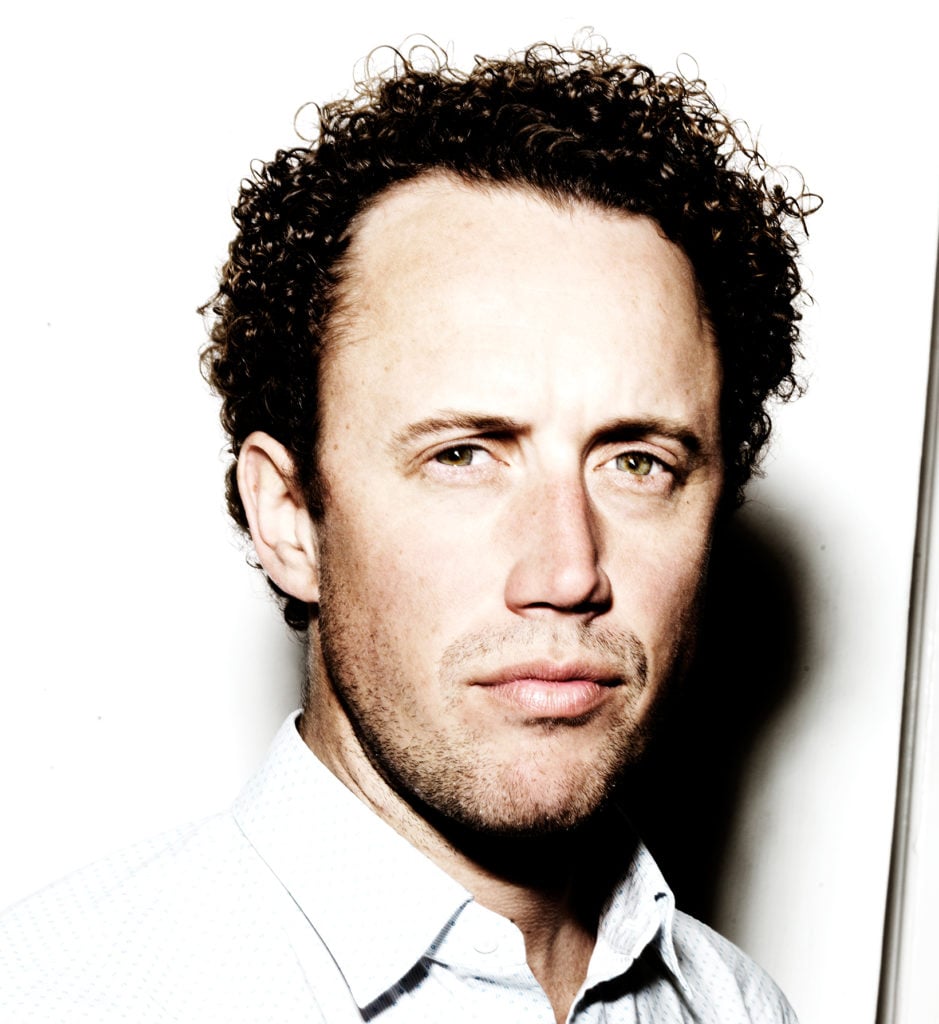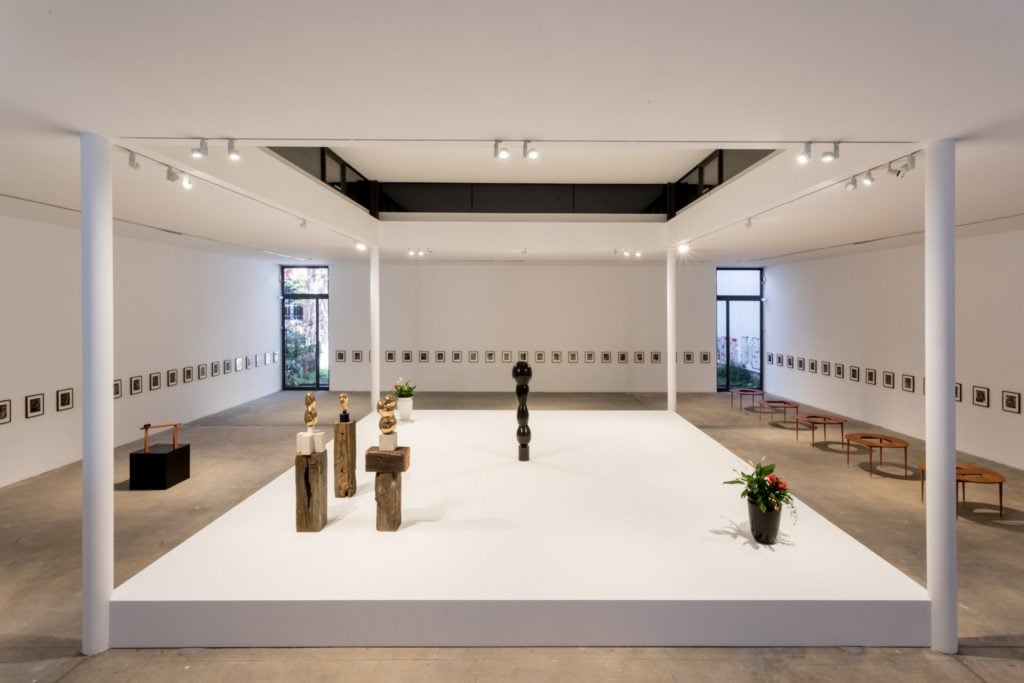People
The Director of Berlin’s KW Institute on His First Year Leading a Fabled Art Center in Transition
Krist Gruijthuijsen is giving the city the art institute it didn’t know it was missing. Is it working?

Krist Gruijthuijsen is giving the city the art institute it didn’t know it was missing. Is it working?

Hili Perlson

Since taking the reins at Berlin’s KW Institute for Contemporary Art in July 2016, Dutch curator Krist Gruijthuijsen has been presenting an unflagging program of quick-changing exhibitions and events at the storied art center, often staging artists’ first-ever institutional shows in Berlin—or sometimes even Germany, like Adam Pendleton or Ronald Jones, whose exhibition “Enemy of the Stars” recently closed.
Launched in the early 1990s in post-Reunification Berlin by now-MoMA PS1 director Klaus Biesenbach and a group of likeminded friends, the institution’s many incarnations and developments since its founding have always mirrored the changes shaping the German capital, from the war-damaged empty spaces abundant in the former East Berlin in the early days, to today’s fast-gentrifying hub favored by the creative industries.
Gruijthuijsen’s appointment in fact came at a time when the city’s art scene seemed to have taken a sharp turn towards professionalization, with more high-profile figures alighting in the city, like Ai Weiwei or Chris Dercon, and successful local artists like Tino Sehgal or Olafur Eliasson (who’s on the board of KW) gaining even bigger international recognition.
This progress was reflected within the institution, too. The city’s senate doubled KW’s budget when Gruijthuijsen took office, and the structure of his position has been redefined. Previously, the director would be responsible for both the institution and the Berlin Biennale. Now, the role has been separated, and while the KW remains the commissioning body of the biennial exhibition as well as its main location, Gabriele Horn, KW’s former director, will continue to serve as the biennale’s director.
Coming to Berlin after four years as artistic director of the Kunstverein in Graz, Austria, Gruijthuijsen’s cerebral approach to exhibitions-making, combined with a tendency towards conceptualism and minimalism, is slowly transforming the KW into a space with a clearly defined character—a feature that, as he told artnet News, is generally missing in the city, with too much overlap existing between its institutions.
The main show of this season, “Enemy of the Stars,” presents American artist and critic Ronald Jones’s complex handling of history as material. There are sculptures that look like Modernist works but are in fact an enlarged depiction of the HIV virus; cherrywood tables that recall midcentury Scandinavian design, but are small replicas of negotiation tables designed for the 1973 Peace Accord that ultimately ended the Vietnam War. There are also works in the show by other artists like David Hammons or Louise Lawler, among others, and although it was planned well in advance—with an earlier iteration staged at the Grazer Kunstverein back in 2014—the show’s political message is extremely relevant.
artnet News sat down with the young director in the institution’s courtyard café to discuss his first year at KW, and his perception of Berlin’s evolving art landscape—its strengths and flaws—as well as his unique approach to collaboration, community building, and the importance of small playful gestures in his studious shows.
At the entrance to the main level, folded on the ground, there’s a flag bearing the distinctive blue-and-white emblem for the Protection of Cultural Property, defined by the Hague Convention. It’s part of Roland Jones’s show, which seems pared down in its aesthetic and display but is full of chilling references. What does the inclusion of the flag indicate?
“Enemy” is a show that I’ve curated with Jason Dodge and it’s based on a conversation that I’ve been having with him for a long time around Ronald Jones. For me, it was an important show to mark the space [of KW] as a space for exhibition and cultural significance. The first part of the show is only about defining space.
Much of Ron’s work is about playing with the notion of display—typical museological display. This “looks” like a museum, but in fact everything that you’re looking at is a portraiture of the last 150 years of the significant events that have formed our society and have proven us to be evil on many levels.
The programming is always political without being in-your-face, and having very specific voices within that. I feel that this season, without sounding pompous, is showing a portraiture of humanity based on disagreements. Everything in the program is conceptually driven, but some are dryer than others [laughs].

View of “Enemy of the Stars,” Ronald Jones in dialogue with David Hammons, Louise Lawler, Helmar Lerski, and Julia Scher. KW Institute for Contemporary Art, 2017, Photo: Frank Sperling
How much do you try to react to current affairs with the programming at KW?
The whole year has been programmed in advance, and things move fast in the world but not that fast. I’ve never been the type of curator that leaves gaps in the program in order to be “the first,” or be “on point”—it’s about giving space to a specific voice that you feel has a certain urgency today or in the next years, but they touch on subjects that are relevant without being too specific.
You could talk about someone like Trump for years, but for me it’s about larger questions, and also about how the program continues developing itself. And you can see it a bit more in this season—the first season was based on commissions; not surveying an artist’s work but rather presenting a new piece. Now, with Hiwa K and Nicholas Mangan’s exhibitions [on view through Sunday], it’s showing an artist’s position in total.
You’ve been in your position for one year now, with the first season opening six months ago, after the building’s refurbishment. Those last months have been full of shows which opened in quick succession, and a rich program of events and happenings around them. As a viewer, it was sometimes hard to keep track. Was that part of the plan?
The most important thing for me is to get feedback on how one perceives the ambitions and concepts of KW after the first six months. When I first presented the program last winter I purposely said that I was going to overwhelm the city with a lot of exhibitions in very quick succession, just to give an introduction and a pace to what we’re trying to achieve.
Obviously this is not a pace we are continuously going to operate in, but it was necessary also for practical reasons: When the season opened, the building was under renovation, and we weren’t able to open two shows at the same time. The different shows are very clearly curated together but they also have their own space, so there was a lot of testing, also of the audience’s response. Viewers are used to seeing the building completely open, which is for us also preferable. So the first season for me was about testing the ground. I’m also very self-critical, so it’s not where I want it to be just yet, but I’m very proud of what the team and I have achieved in the last six months.
The different parts of the public program are all talking in different ways about communities, either trying to create ones, like the Pogo Bar [a reopened hangout in the institution’s basement with weekly events], or they speak to little communities, like the “Lichtspiele” series which has touched mostly on transgender questions in its first season. Each has its own circle [of people attending], and that’s a bit how the public program operates. It’s much more locally grounded. It does bring a lot of international perspectives, but it’s also more local- and conversation-based. The exhibitions are much more static in comparison.
The backbone is the different functionalities this place has, we’re not just an exhibition space; we are also called an “institute,” so there is a different responsibility to the city itself.
Speaking of the city, Berlin’s situation is rather unique in that it gets so much international attention, but at home, there are hardly any local collectors or a culture of philanthropy, which are vital for institutions elsewhere. You also came to the city in the midst of its accelerated transformation. Where do you think Berlin is heading towards in terms of its art scene?
The city is not built on philanthropy, but Berlin is growing up in this respect. People are slowly realizing that not everything should be completely subsidized.
I’m excited but critical about where the city is heading towards, but I also had some reservations about how it was before. It’s the people who define the city, not the institutions. There’s a constant urge to initiate something in Berlin and the city is jam-packed with cultural consumers. You do the smallest event and dozens of people show up! This is the most interesting city to go and see gallery shows, but institutionally Berlin can have a little bit of a push.
What are your plans for the upcoming season at KW?
A show by Willem de Rooij is coming up. He also chose seven Berlin-based artists who he thinks need to be heard and seen, and they received a commissioning budget to create works. It is important to us to do an exhibition with Willem as he’s been such an important educator [at Frankfurt’s Städlschule] and an influence in the past decades, in Berlin and beyond.
Simultaneously, we’re working on the first solo exhibition by British artist Lucy Skaer in Berlin. We’ll be showing a new commission as well as a selection of her most significant works from the last 10 years.